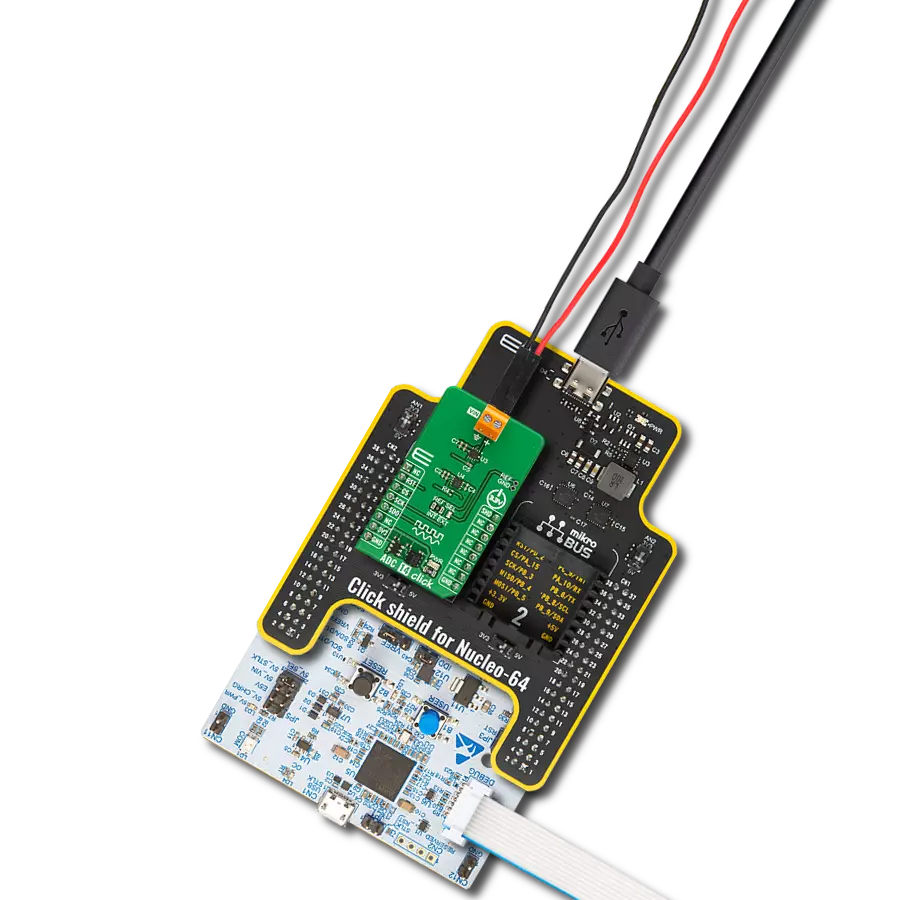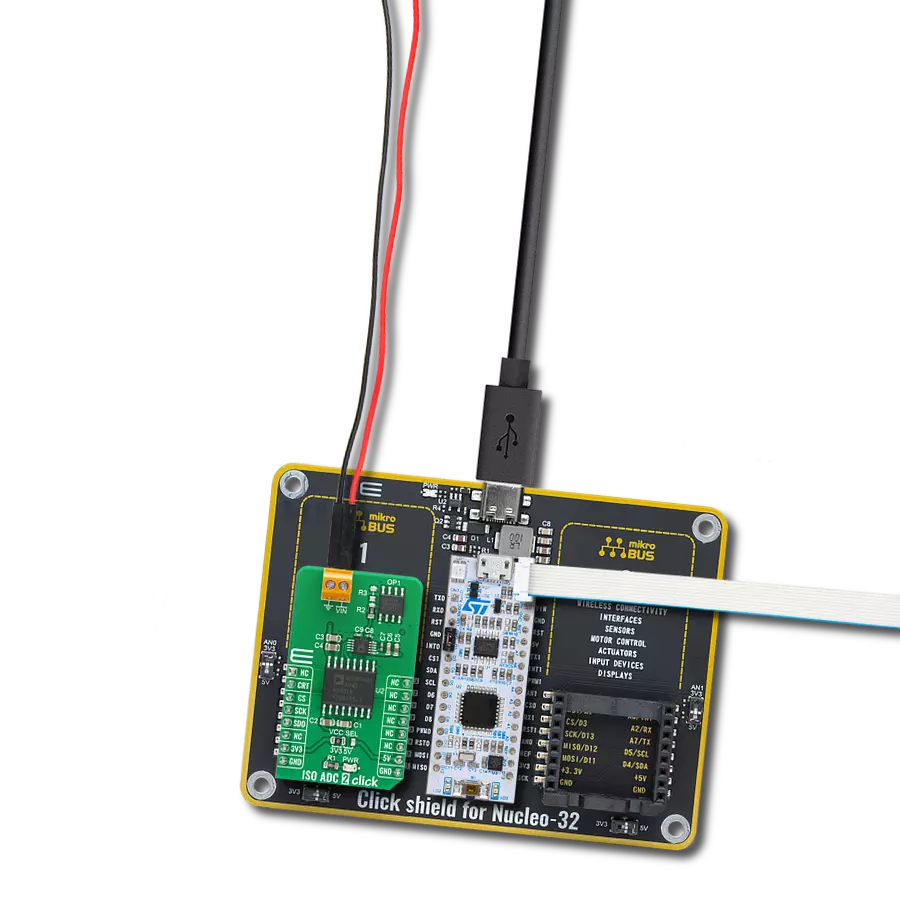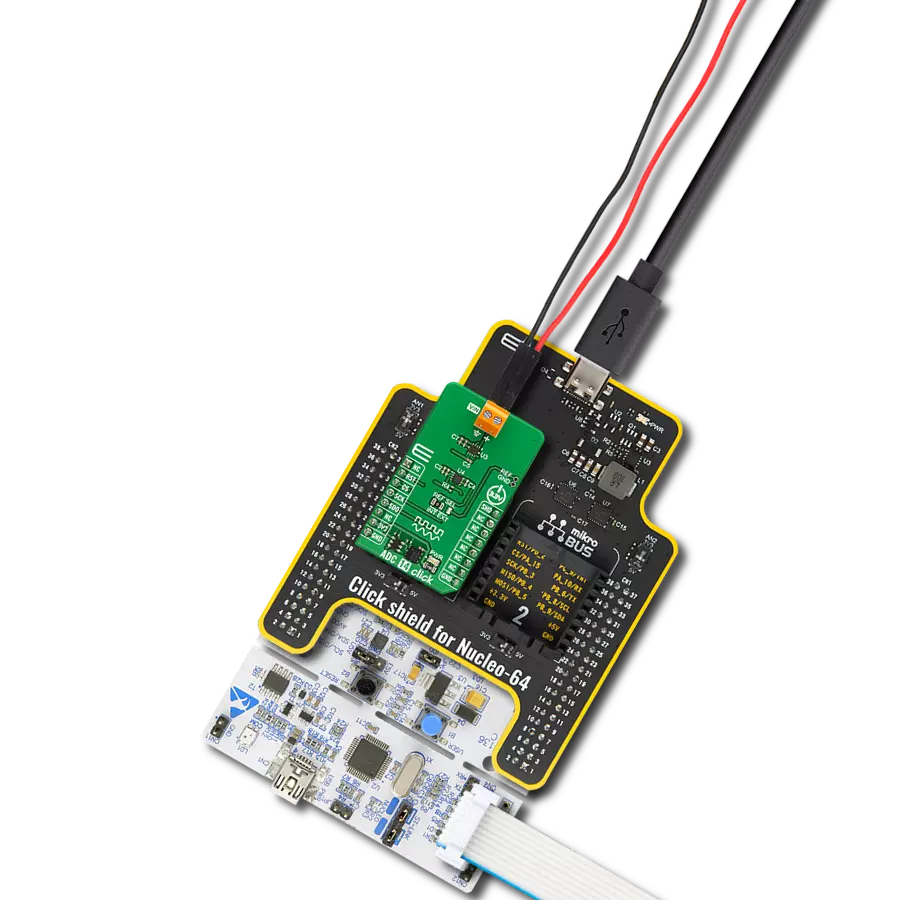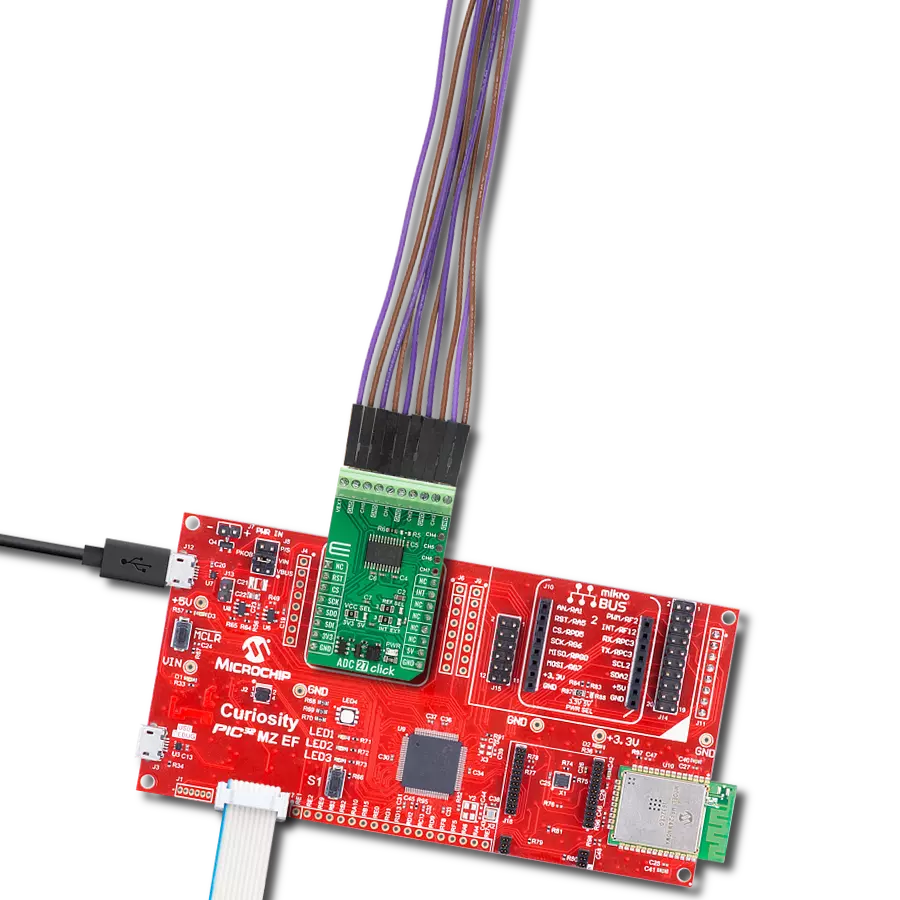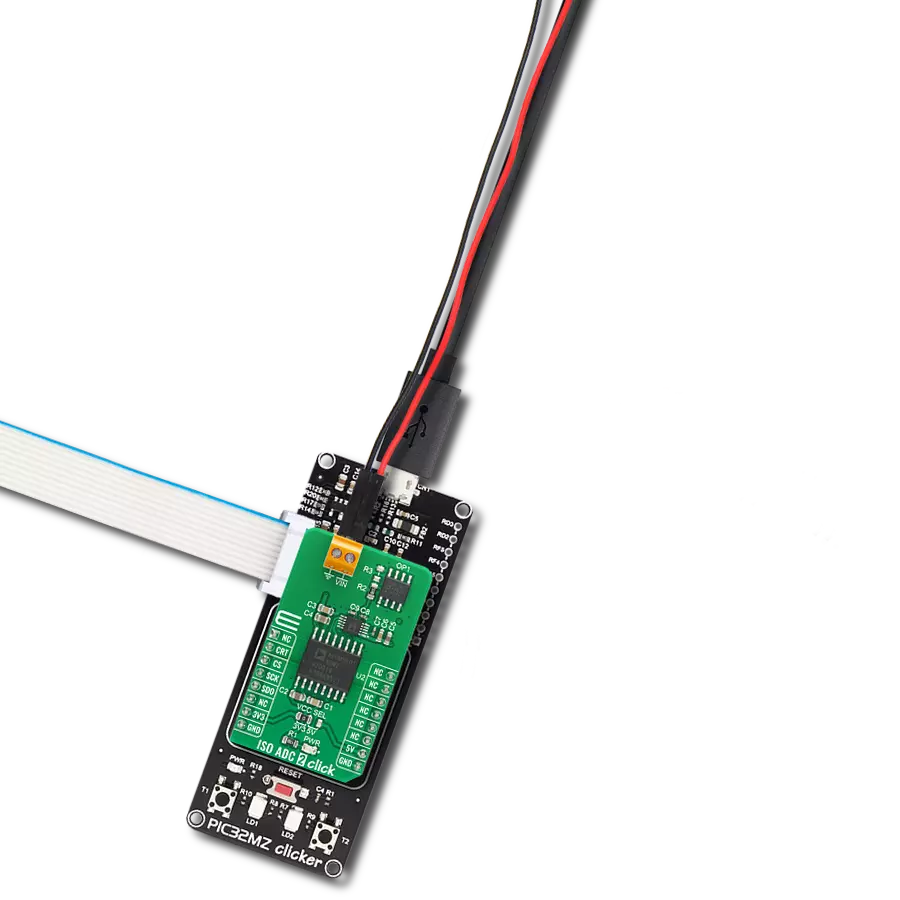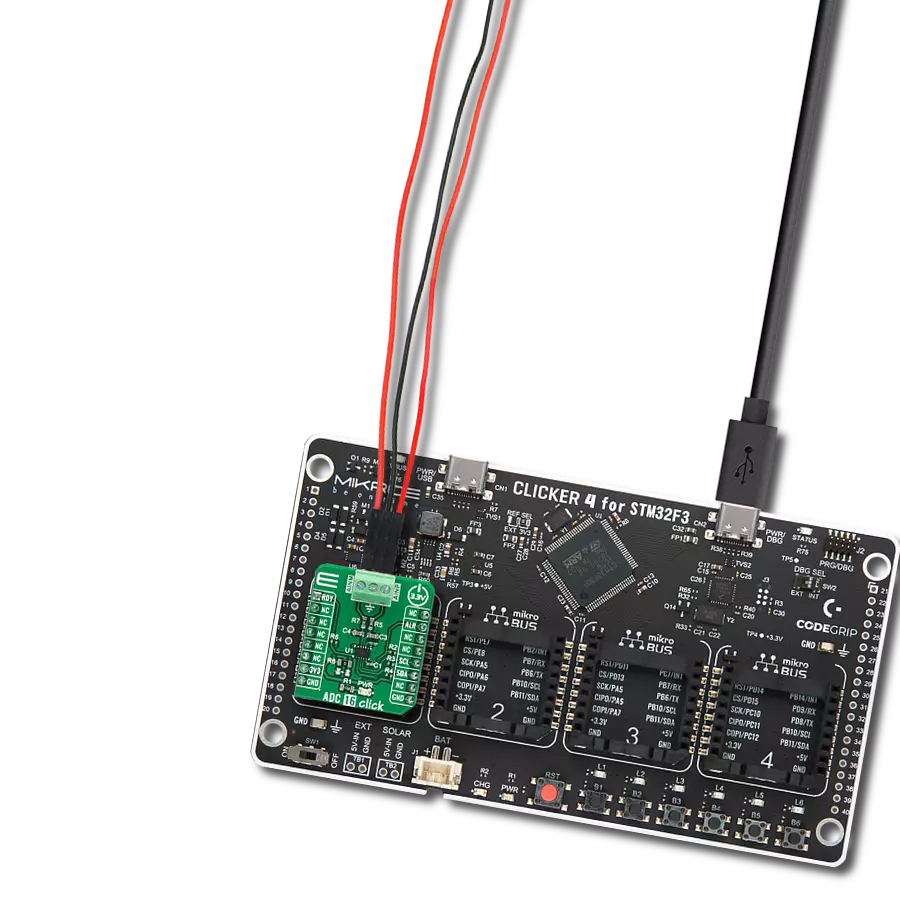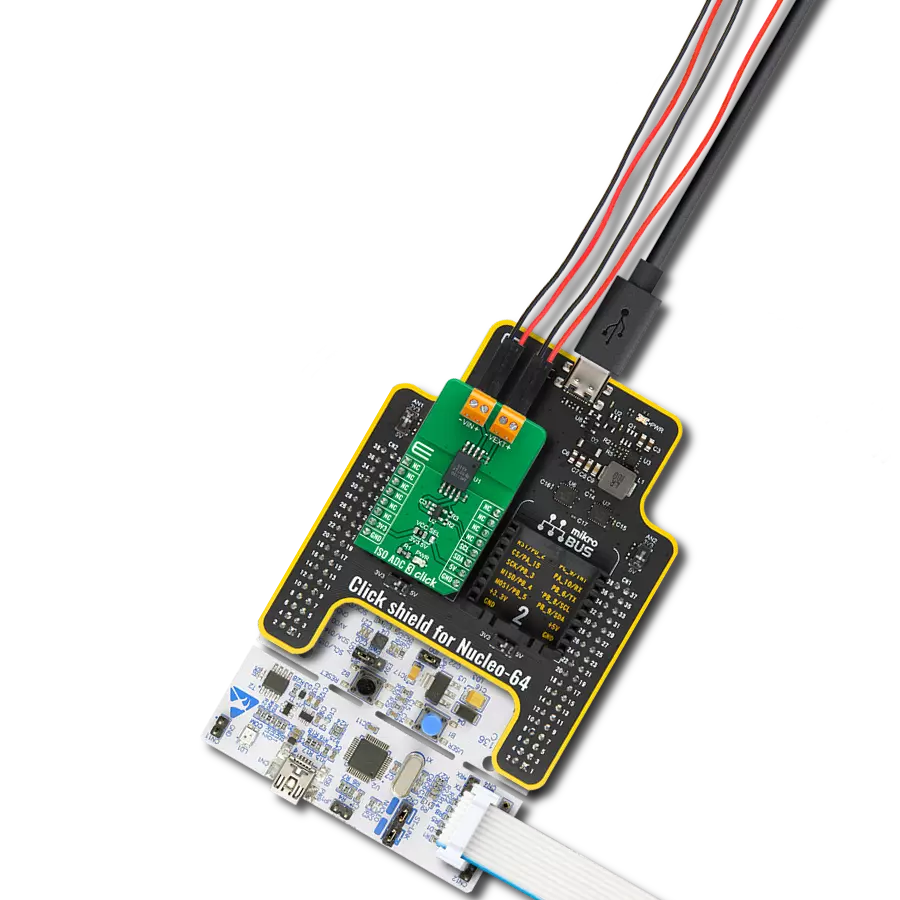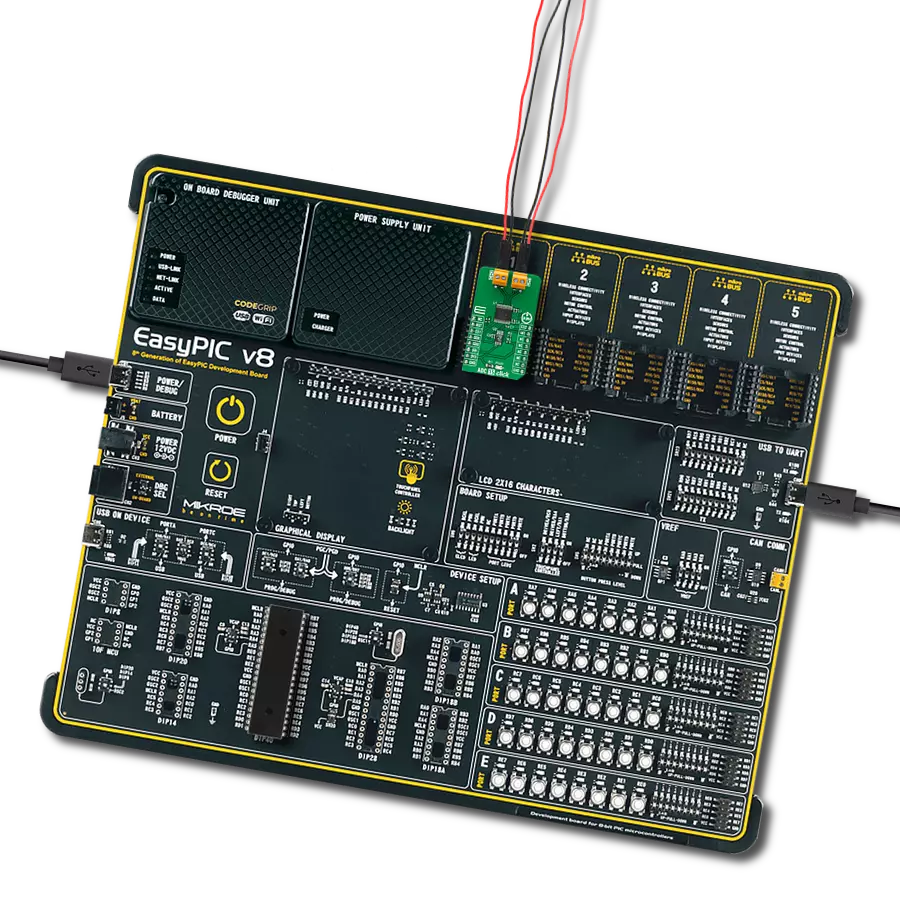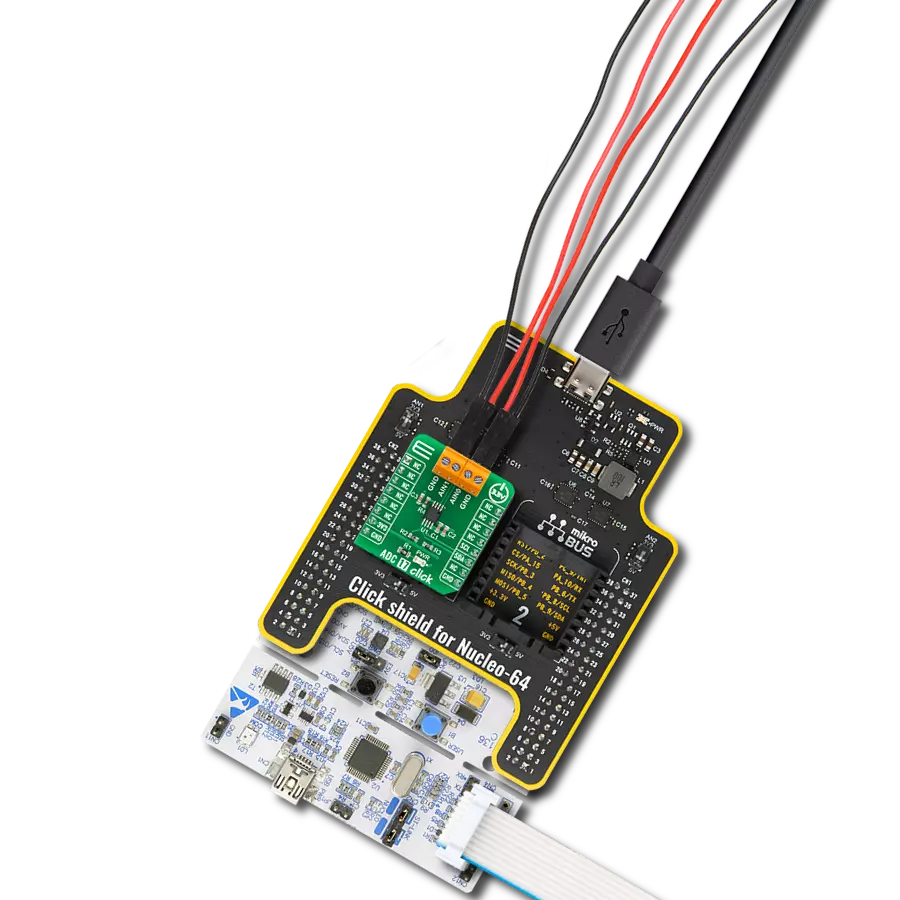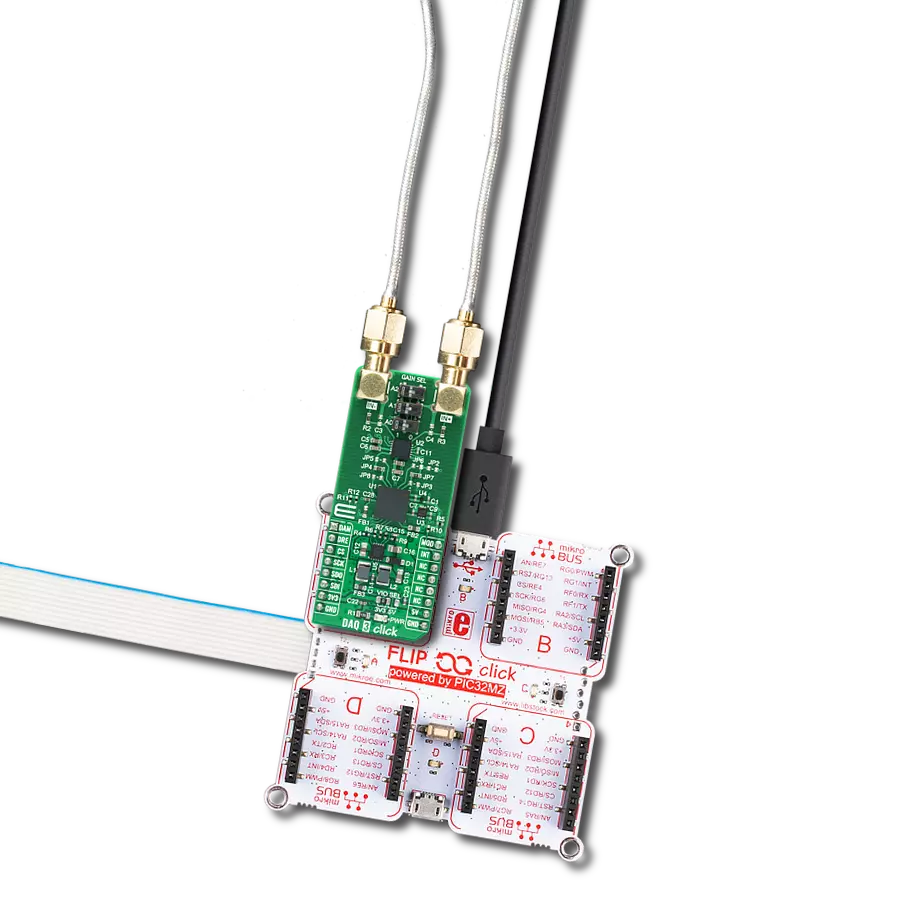Help electronics understand and work with information from the real world
A
A
Hardware Overview
How does it work?
ADC Click is based on the MCP3204, a 4-channel 12-bit A/D converter with SPI serial interface from Microchip. The MCP3204 contains an input channel selection multiplexer (CH0, CH1, CH2, CH3) which for reference can use the VCC (3.3V or 5V) or a 4.096V of the MCP1541 voltage reference from Microchip. The voltage reference determines the analog voltage range and can be selected via REFERENCE onboard jumper. To connect the
analog voltages to the ADC Click, utilize the four labeled terminals CH0-3 along with two GND terminals for referencing the ground. Each analog input pin goes through the MCP6284, a 5MHz rail-to-rail OpAmp from Microchip. The ADC Click uses a standard 4-Wire SPI serial interface to communicate with the host MCU, supporting both 0 and 3 of the SPI modes and operating at clock rates of up to 2MHz. Communication with the ADC
Click is initiated by bringing the CS line LOW. This Click board™ can operate with either 3.3V or 5V logic voltage levels selected via the PWR SEL jumper. This way, both 3.3V and 5V capable MCUs can use the communication lines properly. However, the Click board™ comes equipped with a library containing easy-to-use functions and an example code that can be used, as a reference, for further development.
Features overview
Development board
Clicker 4 for STM32F4 is a compact development board designed as a complete solution that you can use to quickly build your own gadgets with unique functionalities. Featuring an STM32F407VGT6 MCU, four mikroBUS™ sockets for Click boards™ connectivity, power management, and more, it represents a perfect solution for the rapid development of many different types of applications. At its core is an STM32F407VGT6 MCU, a powerful microcontroller by STMicroelectronics based on the high-performance
Arm® Cortex®-M4 32-bit processor core operating at up to 168 MHz frequency. It provides sufficient processing power for the most demanding tasks, allowing Clicker 4 to adapt to any specific application requirements. Besides two 1x20 pin headers, four improved mikroBUS™ sockets represent the most distinctive connectivity feature, allowing access to a huge base of Click boards™, growing on a daily basis. Each section of Clicker 4 is clearly marked, offering an intuitive and clean interface. This makes working with the
development board much simpler and, thus, faster. The usability of Clicker 4 doesn’t end with its ability to accelerate the prototyping and application development stages: it is designed as a complete solution that can be implemented directly into any project, with no additional hardware modifications required. Four mounting holes [4.2mm/0.165”] at all four corners allow simple installation by using mounting screws.
Microcontroller Overview
MCU Card / MCU
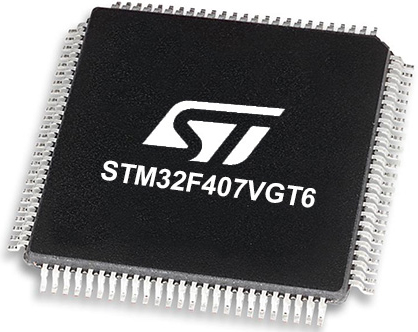
Architecture
ARM Cortex-M4
MCU Memory (KB)
10
Silicon Vendor
STMicroelectronics
Pin count
100
RAM (Bytes)
100
Used MCU Pins
mikroBUS™ mapper
Take a closer look
Click board™ Schematic

Step by step
Project assembly
Software Support
Library Description
This library contains API for ADC Click driver.
Key functions:
adc_get_single_ended_ch- Get Single-Ended Channel functionadc_get_differential_ch- Get Pseudo-Differential Pair function
Open Source
Code example
The complete application code and a ready-to-use project are available through the NECTO Studio Package Manager for direct installation in the NECTO Studio. The application code can also be found on the MIKROE GitHub account.
/*!
* \file main.c
* \brief ADC Click example
*
* # Description
* This example demonstrates the use of ADC Click board.
* The all channels can be configured as single-ended or pseudo-differential
* pair.
*
* The demo application is composed of two sections :
*
* ## Application Init
* Initializes SPI driver, performs the reference voltage selection and
* initializes UART console for results logging.
*
* ## Application Task
* Reads voltage level of channels 0 and 1 in the both configurations,
* single-ended and pseudo-differential pair, every 1 second.
* All channels results will be calculated to millivolts [mV].
*
* *note:*
* In single-ended mode the all channels must be in the range from Vss (GND)
* to Vref (3V3 by default).
* In pseudo-differential mode the IN- channel must be in the range from
* (Vss - 100mV) to (Vss + 100mV). The IN+ channel must be in the range from
* IN- to (Vref + IN-).
* If any of conditions are not fullfilled, the device will return 0 or Vref
* voltage level, and measurements are not valid.
*
* \author Nemanja Medakovic
*
*/
// ------------------------------------------------------------------- INCLUDES
#include "board.h"
#include "log.h"
#include "adc.h"
// ------------------------------------------------------------------ VARIABLES
static adc_t adc;
static log_t logger;
// ------------------------------------------------------ APPLICATION FUNCTIONS
void application_init( void )
{
log_cfg_t log_cfg;
adc_cfg_t cfg;
/**
* Logger initialization.
* Default baud rate: 115200
* Default log level: LOG_LEVEL_DEBUG
* @note If USB_UART_RX and USB_UART_TX
* are defined as HAL_PIN_NC, you will
* need to define them manually for log to work.
* See @b LOG_MAP_USB_UART macro definition for detailed explanation.
*/
LOG_MAP_USB_UART( log_cfg );
log_init( &logger, &log_cfg );
log_info( &logger, "---- Application Init ----" );
// Click initialization.
adc_cfg_setup( &cfg );
ADC_MAP_MIKROBUS( cfg, MIKROBUS_1 );
adc_init( &adc, &cfg );
}
void application_task( void )
{
adc_get_single_ended_ch( &adc, ADC_CH0_OR_CH01 );
adc_get_single_ended_ch( &adc, ADC_CH1_OR_CH10 );
adc_get_single_ended_ch( &adc, ADC_CH2_OR_CH23 );
adc_get_single_ended_ch( &adc, ADC_CH3_OR_CH32 );
adc_get_differential_ch( &adc, ADC_CH0_OR_CH01 );
log_printf( &logger, "* CH0 = %u mV\r\n", adc.ch0 );
log_printf( &logger, "* CH1 = %u mV\r\n", adc.ch1 );
log_printf( &logger, "* CH2 = %u mV\r\n", adc.ch2 );
log_printf( &logger, "* CH3 = %u mV\r\n", adc.ch3 );
log_printf( &logger, "* CH0 - CH1 = %d mV\r\n", adc.ch01 );
log_printf( &logger, "-----------------------------\r\n" );
Delay_ms ( 1000 );
}
int main ( void )
{
/* Do not remove this line or clock might not be set correctly. */
#ifdef PREINIT_SUPPORTED
preinit();
#endif
application_init( );
for ( ; ; )
{
application_task( );
}
return 0;
}
// ------------------------------------------------------------------------ END
Additional Support
Resources
Category:ADC

















